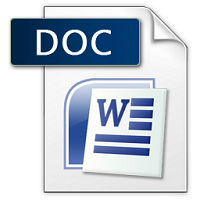₹198.00
Scroll down for Match your questions with Sample
Note- Students need to make Changes before uploading for Avoid similarity issue in turnitin.
Another Option
UNIQUE ASSIGNMENT
0-20% Similarity in turnitin
Price is 700 per assignment
Unique assignment buy via WhatsApp 8755555879
Description
| SESSION | AUGUST 2023 |
| PROGRAM | MASTER OF COMPUTER APPLICATIONS (MCA) |
| SEMESTER | I |
| COURSE CODE & NAME | DCA6104 – ADVANCED DATABASE MANAGEMENT SYSTEM |
Set – I
- What do you mean by Normalization? How BCNF is different from 3NF? 3+7
Normalization in database management is a process used to organize a database into tables and columns. The main idea with this setup is that a table should be about a specific topic and that only supporting topics included. For example, a spreadsheet containing information about salespeople and customers serves several purposes:
- Identify salespeople in your organization
- List all customers your company calls upon to sell a product
- Identify which
- Explain the concept of serializability and Recoverability. Illustrate how to manage rollbacks by locking. 5+5
Ans 2.
Serializability in Advanced Database Management Systems
Serializability in the context of advanced database management systems is a fundamental concept that ensures consistency in the database despite concurrent transactions. Essentially, serializability is a property of a transaction schedule (sequence of read and write operations) which ensures that the
Its Half solved only
Buy Complete from our online store
https://smuassignment.in/online-store/
MUJ Fully solved assignment available for session SEPT 2023.
Lowest price guarantee with quality.
Charges INR 198 only per assignment. For more information you can get via mail or Whats app also
Mail id is aapkieducation@gmail.com
Our website www.smuassignment.in
After mail, we will reply you instant or maximum
1 hour.
Otherwise you can also contact on our
whatsapp no 8791490301.
- What do you mean by data Model? Explain different types of data models by giving suitable examples. 2+8
Ans 3.
Data Model
In the realm of database management, a data model is an abstract and conceptual representation of data objects and their relationships, rules, and constraints within a database. Its primary purpose is to structure the data in a way that it is efficiently stored, retrieved, and managed. Data models provide a framework that determines the structure of a database and influences how data can be accessed and manipulated.
Types of Data Models
- Hierarchical Data
Set – II
- Explain the concept of database recovery management. Discuss the different levels of backup used for recovering data.
Ans 4.
Database Recovery Management
Database recovery management is a critical aspect of advanced database management systems, designed to ensure data integrity and continuity in the event of system failures, data corruption, or other unforeseen incidents. The primary objective of database recovery management is to restore a database to a correct state, minimizing the loss of data and maintaining the
5(a) What is a persistent programming language? How can it be differentiated with embedded SQL? Illustrate 5
(b) Explain the functions and components of DDBMS. 2+3
Ans 5.
- A persistent programming language is designed to store and manage data that outlives the program that created it. In other words, it facilitates the creation, storage, and retrieval of objects in a way that maintains their state across program executions. This is achieved by seamlessly integrating database capabilities directly into the programming language, allowing developers to manipulate persistent objects as easily as transient objects. The key feature of a persistent programming language is its ability to automatically manage the longevity of objects,
- (a) What are the different types of partitioning techniques? Describe in detail.
(b) What is the difference between temporal and multimedia database?
Ans 6.
- Partitioning Techniques in Databases
In the realm of database management, partitioning refers to the process of dividing a database into smaller, more manageable segments, or partitions. This technique is employed for various reasons, including enhancing performance, simplifying maintenance, and improving manageability. There are several types of partitioning techniques:
Horizontal Partitioning:


